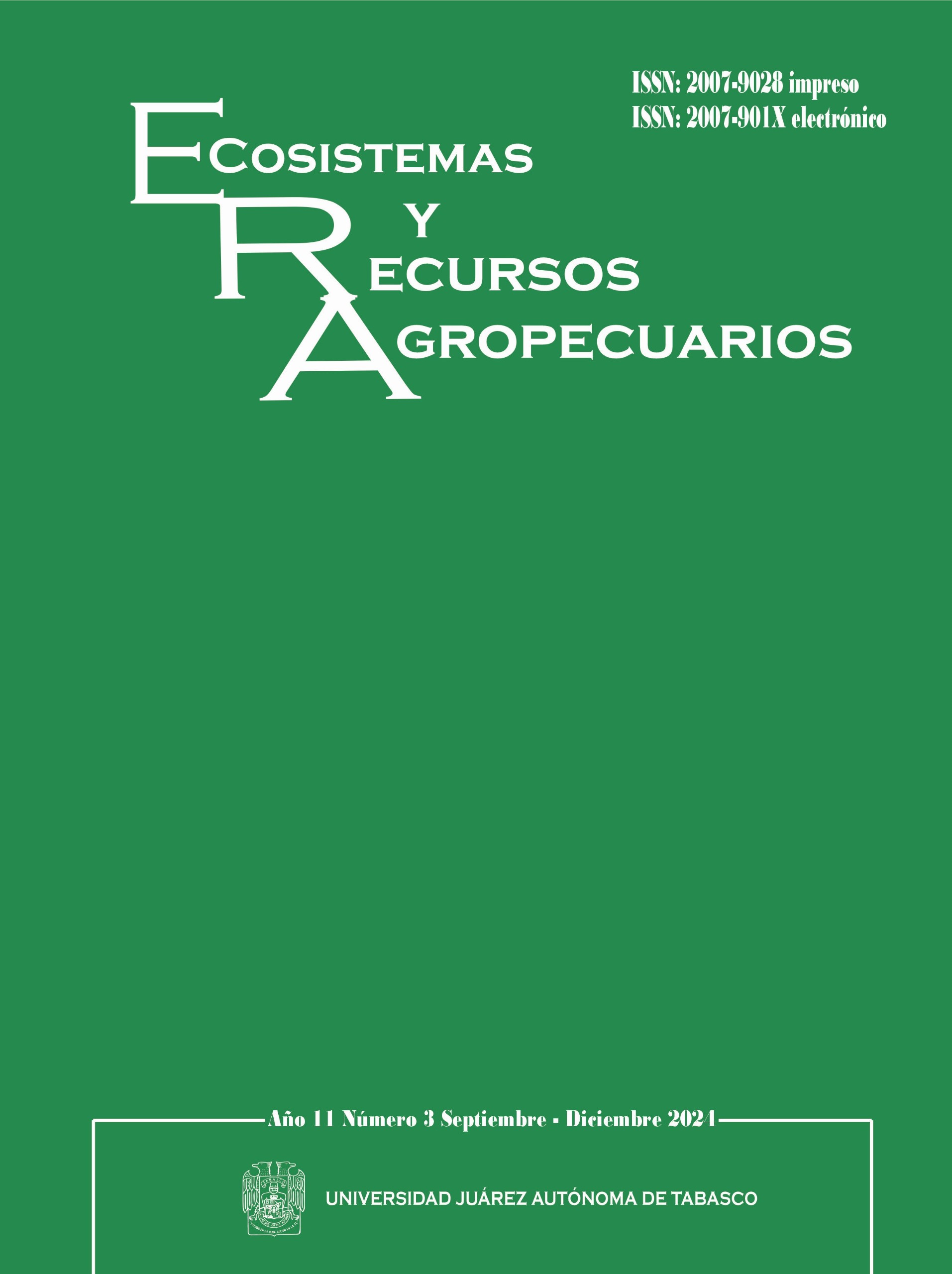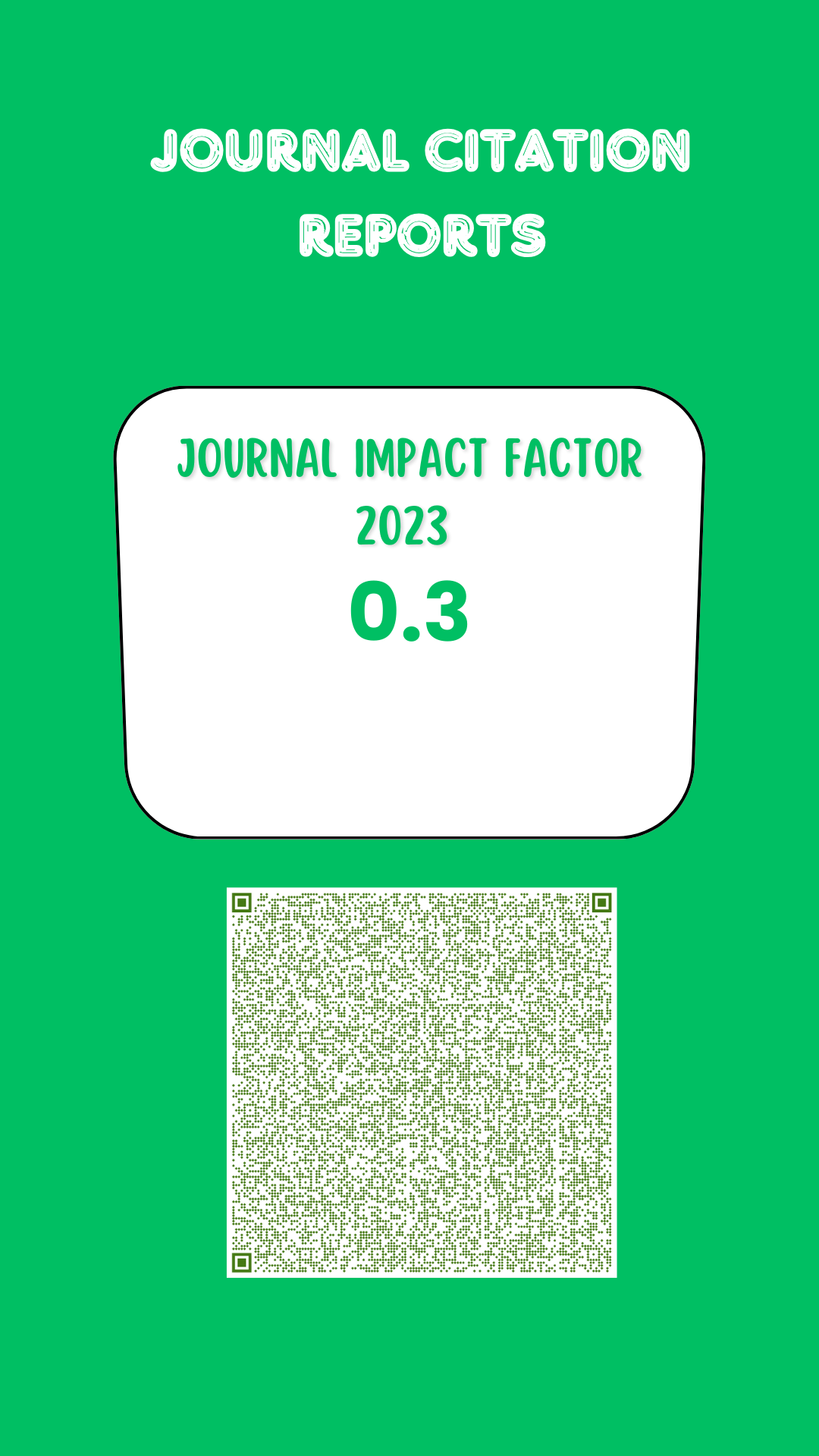Fungi Associated to Descending Necrosis on Peach Trees at Valparaiso, Zacatecas, Mexico: First Report
DOI:
https://doi.org/10.19136/era.a11n3.4163Keywords:
Alternaria tenuissima, Fusarium oxysporum, Fusarium solani, branchesAbstract
In peach orchards of Caracoles, Valparaiso, Zacatecas, a disease manifests with the main symptom of descending necrosis in branches. Currently, the causal agents of this disease are unknown, which make it difficult itsprevention and control. The objective of the research was to identify the fungi associated with descending necrosis in the branches of the peach tree, as well as the agent that could be the causal of the disease. Roots and branches of the trees were sampled. The fungal strains were identified morphologically and molecularly, and the obtained sequences were compared with sequences reported in the GenBank database using the NCBI BLAST tool. In vivo pathogenicity tests were conducted. The fungi identified as associated with descending necrosis in branches of the Diamante ecotype peach tree were: Alternaria tenuissima, Fusarium oxysporum, and F. solani. Additionally, it was confirmed that A. tenuissima could be
the causal agent of the disease.
Downloads
References
Abarca P, Allende M, Antúnez A (2017) Manual de manejo del cultivo de Duraznero. Instituto de Desarrollo Agropecuario - Instituto de Investigaciones Agropecuarias. Boletín INIA N° 373. Chile. 131p.
Ángel-García C, Robledo-Buriticá J, Castaño-Zapata J (2018) Comparación de métodos de inoculación de Fusarium solani f. sp. passiflorae en plántulas de maracuyá (Passiflora edulis f. flavicarpa). Revista UDCA Actualidad & Divulgación Científica 21(1): 23-31. https://doi.org/10.31910/rudca.v21.n1.2018.659
Astapchuk I, Yakuba G, Nasonov A (2020) Species diversity of root rot pathogens of apple tree of the genus Fusarium Link in Southern Russia. In BIO Web of conferences 21: 00005. https://doi.org/10.1051/bioconf/20202100005.
Barnett HL, Hunter BB (1998) Illustrated genera of imperfect fungi. 4th Ed. The American Phytopathological Society. St Paul, Minnesota, USA. 218p.
Bolboli Z, Tavakolian B, Mostowfizadeh-Ghalamfarsa R, Jafari M, Cacciola SO (2022) Stilbocrea banihashemiana sp. nov. a new fungal pathogen causing stem cankers and twig dieback of fruit trees. Journal of Fungi 8(7): 694. https://doi.org/10.3390/jof8070694
Cancino S, Lolas M, Galdós L, Hernández Y, Ferrada E, Riveros P, Blanco B, A Díaz G (2023) Occurrence of Alternaria alternata and A. tenuissima causing black rot in cherry fruits (Prunus avium) in Central Chile. Plant Disease 107(12): 4032. https://doi.org/10.1094/PDIS-07-23-1435-PDN
Ceballos CÁR, Lizárraga SGJ, Leyva MKY, Caughey EDM, Chávez GLE, Valenzuela EFA, López VBE (2023) Hospedantes en frutales de importancia económica asociados a patógenos foliares del duraznero (Prunus persica L.). Bioagro 35(3): 259-270. https://doi.org/10.51372/bioagro353.9
Cisneros MGV, Torres AR, Saldaña-Hereida A, Salinas-Sánchez DO (2021) Behavior of Prunus persica as green and friendly corrosion inhibitor for corrosion protection. In: Ayzin Kuden, Prunus: Recent advances. IntechOpen. Turquía. pp. 1-23. https://dx.doi.org/10.5772/intechopen.98385
Соколова ЛМ (2019) Анализ видового разнообразия грибов из рода Fusarium. Аграрная наука 1: 118-122. https://doi.org/10.32634/0869-8155-2019-326-1-118-122
Esmaili Z, Sharifnabi B (2023) Fusarium species associated with apple trees decline in Isfahan, Iran. Mycologia Iranica 10(1): 23-34. 10.22043/MI.2022.360249.1235
Jahén Rivera SN, Gomez Rivera O, Espinosa Victoria D (2020) Aislamiento e identificación de patógenos causantes de la pudrición del tallo de la higuera (Ficus carica ). Revista Mexicana de Fitopatología 38(2): 269-279. http://dx.doi.org/10.18781/R.MEX.FIT.2001-6.
González-Díaz JG, García-Velasco R, Camacho-Cerón G, Nieto-Ángel D (2011) Cancrosis en ramas de Salix bonplandiana Kunth causada por Alternaria tenuissima (Kunze ex Pers.) Wiltshire. Agrociencia 45(1): 75-86.
INIFAP (2005) Prácticas culturales para producir durazno criollo en Zacatecas. Centro de Investigación Regional Norte Centro Campo Experimental Zacatecas. Publicación Especial No 15. México. 85p.
Leslie JF, Summerell BA (2006) The Fusarium laboratory manual. Blackwell Professional. Ames, Iowa, USA. 389p.
Li L, Pan H, Deng L, Wang ZP, Li DW, Zhang Q, Chen MI, Zhong CH (2019) First report of Alternaria tenuissima causing brown spot disease of kiwifruit foliage in China. Plant Disease 103(3): 582-582. https://doi.org/10.1094/PDIS-07-18-1217-PDN
Luo CX, Schnabel G, Hu M, De Cal A (2022) Global distribution and management of peach diseases. Phytopathology Research 4(1): 1-15. https://doi.org/10.1186/s42483-022-00134-0
Pinargote CB, Apuntes ES, Tobar R L, Jiménez MC, Castro FB, Navarrete PD (2020) Ceratocystis fimbriata agente causal de la enfermedad de marchitez vascular de Tectona grandis Lf (teca) en Ecuador. Boletín Micológico 35(1). https://doi.org/10.22370/bolmicol.2020.35.1.2401
Riquelme D, Zúñiga C, Tapia E (2021) First report of fruit rot ofsweet cultivars of japanese plum caused by Alternaria alternata, A. arborescens, and A. tenuissima in Chile. Plant Disease 105(12):4167. https://doi.org/10.1094/PDIS-03-21-0465-PDN
Robledo-D’Angelo O (2016) Enfermedad de marchitamiento fúngico en plántulas de lechuga: un modelo didáctico-experimental para la enseñanza de los postulados de Koch. Revista Eureca sonbre Enseñanza y Divulgación de las Ciencias 13 (3): 680-685.
Rodríguez GD, Vargas RJ (2022) Efecto de la inoculación con Trichoderma sobre el crecimiento vegetativo del tomate (Solanum lycopersicum). Agronomía Costarricense 46(2): 47-60. http://dx.doi.org/10.15517/rac.v46i2.52045
Rodríguez RDP, Hernández E (2004) Mucor foliar spot and mycoflora in stem and root lesions of peach.Journal of Agriculture of the University of Puerto Rico 88(3/4):155-160.
Rozo MEB, Pinto VF, Pose G (2019) Especies de alternaria asociadas a cultivos de manzana y pera en la Región del Alto Valle del Río Negro, Argentina. Cultura Científica (17):18-31. https://doi.org/10.38017/1657463X.592
Salmasi KO, Miri SM, Gharesheikhbayat R, Pirkhezri M, Davoodi D (2023) Pomological evaluation and GT-biplot analysis of promising open-pollinated genotypes of apricot (Prunus armeniaca L.). Acta Scientiarum Polonorum Hortorum Cultus 22(2): 119-132. https://orcid.org/0000-0001-7514-2503
SIAP (2022) Avances de siembras y cosechas. Secretaría de Agricultura y Desarrollo Rural. https://nube.siap.gob.mx/avance_agricola/. Fecha de consulta: 16 marzo de 2023.
Siddiqui SA, Anwar S, Yunusa BM, Nayik GA, Khaneghah AM (2023) The potential of apricot seed and oil as functional food: Composition, biological properties, health benefits & safety. Food Bioscience 51: 102336. https://doi.org/10.1016/j.fbio.2022.102336.
Simmons EG (2007) Alternaria: an identification manual. CBS Fungal Biodiversity Centre. Utrecht, the Netherlands. 775p.
Zhu JZ, Li CX, Zhang CJ, Wang Y, Li XG, Zhong J (2019) Fusarium solani causing fruit rot of peach (Prunus persica) in Hunan, China. Crop Protection 122: 171-174. https://doi.org/10.1016/j.cropro.2019.05.009
Downloads
Published
Issue
Section
License
Copyright (c) 2024 Ecosistemas y Recursos Agropecuarios

This work is licensed under a Creative Commons Attribution-NonCommercial-ShareAlike 4.0 International License.
Aviso de copyright
Los autores que se envían a esta revista aceptan los siguientes términos:
una. Los autores conservan los derechos de autor y garantizan a la revista el derecho a ser la primera publicación del trabajo con una licencia de atribución de Creative Commons que permite a otros compartir el trabajo con un reconocimiento de la autoría del trabajo y la publicación inicial en esta revista.
B. Los autores pueden establecer acuerdos complementarios separados para la distribución no exclusiva de la versión del trabajo publicado en la revista (por ejemplo, en un repositorio institucional o publicarlo en un libro), con un reconocimiento de su publicación inicial en esta revista.
C. Se permite y se anima a los autores a difundir su trabajo electrónicamente (por ejemplo, en repositorios institucionales o en su propio sitio web) antes y durante el proceso de envío, ya que puede conducir a intercambios productivos, así como a una cita más temprana y más extensa del trabajo publicado. (Consulte El efecto del acceso abierto).



